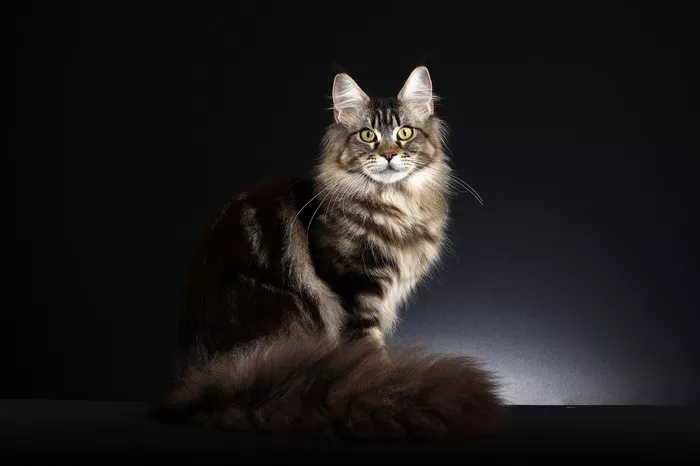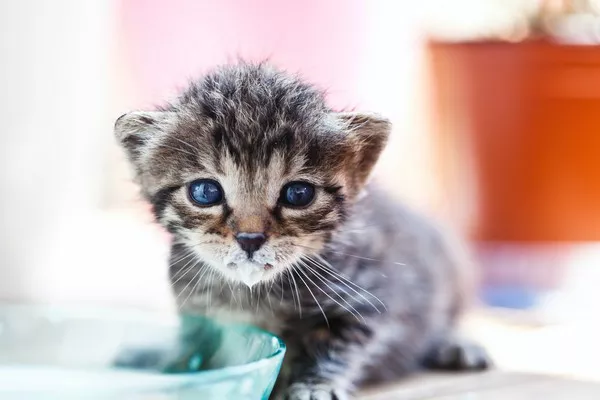Maine Coon cats, often hailed as the gentle giants of the feline world, captivate with their striking appearance and amiable personalities. Originating in the United States and gaining popularity for their impressive size, tufted ears, and luxurious fur, Maine Coons are a breed apart. In this exploration, we unravel the distinctive traits that set the Maine Coon apart from other cat breeds, offering cat enthusiasts and prospective owners valuable insights into identifying these majestic creatures.
5 Ways to Identify a Maine Coon
1. Size Matters:
One of the most notable characteristics of the Maine Coon is its substantial size. These cats are renowned for their long bodies, large bone structure, and tufted ears, creating an imposing and regal presence. While individual sizes may vary, male Maine Coons typically weigh between 13 to 18 pounds, with some reaching an impressive 25 pounds or more. Females, though generally smaller, still exhibit a substantial weight range of 8 to 12 pounds.
The Maine Coon’s size becomes evident early on, with kittens growing at a steady pace. By the age of six months, a Maine Coon kitten is already larger than many fully grown domestic cats. This rapid growth and development contribute to the breed’s distinctive appearance, making size a key factor in identifying these majestic felines.
See Also: Is the Maine Coon the Biggest Cat? Debunking Myths
2. Luxurious Fur:
The Maine Coon’s coat is a testament to its adaptability and resilience in harsh climates. Known for its water-resistant, silky texture, and bushy tail, the breed’s fur is an integral part of its identity. One of the most distinguishing features is the ruff of longer fur around the neck and chest, reminiscent of a lion’s mane, adding to the cat’s majestic aura.
Maine Coons boast a variety of coat colors and patterns, ranging from solid colors to intricate tabby designs. Their fur serves as insulation during colder seasons, with tufted ears and tufts of fur between the toes providing additional protection against the elements. Observing the luxurious coat is a key element in recognizing a true Maine Coon.
3. Tufted Ears and Lynx-like Tips:
The Maine Coon’s ears are iconic, featuring tufts of fur resembling those of a lynx. These tufted ears, combined with a square-shaped muzzle and large, expressive eyes, contribute to the breed’s distinctive facial appearance. Maine Coons often exhibit lynx-like tufts at the tips of their ears, adding a touch of wild elegance to their overall look.
Beyond their decorative function, the tufted ears also serve a practical purpose. In colder climates, the tufts protect the cat’s ears from harsh weather conditions, reflecting the breed’s adaptation to its origins in the rugged landscapes of Maine.
4. Friendly and Sociable Nature:
While physical traits are crucial in identifying a Maine Coon, their temperament is equally distinctive. Maine Coons are renowned for their friendly and sociable nature. Unlike some cat breeds that may be more reserved, Maine Coons often seek social interactions and enjoy the company of their human companions.
These cats are known to form strong bonds with their owners, displaying affection through gentle headbutts, trills, and an impressive array of vocalizations. Their sociable demeanor extends to other pets, making them an excellent choice for multi-pet households. Maine Coons thrive on companionship, and their friendly disposition is a hallmark feature that sets them apart.
See Also: Maine Coons & Dogs: A Match Made in Heaven?
5. Bushy Tails and Playful Antics:
The Maine Coon’s bushy tail is another distinguishing characteristic that contributes to its overall majestic appearance. The tail is long, often extending beyond the length of the cat’s body, and is adorned with a full plume of fur. This bushy tail not only enhances the cat’s regal presence but also serves practical functions, providing balance and insulation in colder weather.
Maine Coons are known for their playful and agile nature. They may engage in interactive play with toys or showcase impressive acrobatic feats, demonstrating their physical prowess. Observing a cat’s tail, particularly the distinctive bushiness and the way it is carried, can be a key factor in confirming its Maine Coon lineage.
See Also: Maine Coon vs Norwegian Forest Cat: What’s the Difference?
In Conclusion
Identifying a Maine Coon involves a careful examination of various physical and behavioral traits. From their substantial size and luxurious fur to the signature tufted ears and friendly demeanor, each element contributes to the Maine Coon’s enigmatic charm. As one of the largest domestic cat breeds, the Maine Coon’s majestic presence and amiable nature make it a favorite among cat enthusiasts.
Prospective owners seeking to welcome a Maine Coon into their homes should be mindful of these distinctive traits. While individual variations exist within the breed, a combination of size, fur characteristics, lynx-like features, friendly disposition, and agile playfulness can collectively confirm the presence of the Maine Coon mystique.
As guardians of these gentle giants, understanding the unique attributes of the Maine Coon enhances the joy of companionship and fosters a deep appreciation for a breed that continues to captivate cat lovers around the world. In unraveling the Maine Coon’s mystery, we embark on a journey of discovery, celebrating the beauty and grace of these regal felines that have earned their place as beloved members of countless households.











![Do Birman Cats Like to Cuddle? [Revealed!]](https://www.catsmeowweb.com/wp-content/uploads/2023/06/burmese-cat-22.webp)













